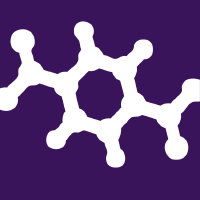Topic Editors




2. Polymer Institute of the Slovak Academy of Sciences, Dúbravská cesta 9, 845 41 Bratislava, Slovakia


Green Polymer Materials for Circular Economy and Sustainable Development
Topic Information
Dear Colleagues,
Producing more than 2.5 billion tonnes of waste a year, the European Union has forced the European Parliament to take appropriate legal measures and promote the transition to a more sustainable model known as a circular economy. This means using raw materials more efficiently, keeping waste to a minimum, and extending the life cycle of products through repeated use (repair, reuse, recycling, and remanufacture). Green polymer materials made from (bio)degradable and/or renewable and/or recycled raw materials can help to prevent and partially reduce waste and contribute to more sustainable life cycles. Furthermore, carbon-neutral energy should be used to produce such polymers, and the end products can be reused or recycled, including organic recycling (processed into compost or biogas). (Bio)degradable and/or renewable and/or recyclable plastics have a lower carbon footprint and may, in some cases, exhibit more favorable material properties in many applications. This Topic welcomes papers that address interdisciplinary approaches aimed at the development of (bio)degradable and/or renewable and/or recyclable polymer materials for environmental, packaging, and medical needs.
Dr. Joanna Rydz
Dr. Marta Musioł
Dr. Barbara Zawidlak-Węgrzyńska
Dr. Alena Opálková Šišková
Dr. Cristian Peptu
Prof. Dr. Darinka Christova
Topic Editors
Keywords
- water-born polymers
- (bio)degradable polymers
- cyclodextrin-based polyester
- nanofibers
- biocomposite
- smart textiles
- polymer biomaterials
- polymeric drug carrier
- biopolymers
- environmental impact
- lifetime prediction
- biocompatibility
- materials structure and property
- controlled release
- drug delivery system
- electrospinning
Participating Journals
| Journal Name | Impact Factor | CiteScore | Launched Year | First Decision (median) | APC | |
|---|---|---|---|---|---|---|

Biomolecules
|
5.5 | 8.3 | 2011 | 16.9 Days | CHF 2700 | Submit |

International Journal of Molecular Sciences
|
5.6 | 7.8 | 2000 | 16.3 Days | CHF 2900 | Submit |

Materials
|
3.4 | 5.2 | 2008 | 13.9 Days | CHF 2600 | Submit |

Nanomaterials
|
5.3 | 7.4 | 2010 | 13.6 Days | CHF 2900 | Submit |

Pharmaceutics
|
5.4 | 6.9 | 2009 | 14.2 Days | CHF 2900 | Submit |

Polymers
|
5.0 | 6.6 | 2009 | 13.7 Days | CHF 2700 | Submit |

MDPI Topics is cooperating with Preprints.org and has built a direct connection between MDPI journals and Preprints.org. Authors are encouraged to enjoy the benefits by posting a preprint at Preprints.org prior to publication:
- Immediately share your ideas ahead of publication and establish your research priority;
- Protect your idea from being stolen with this time-stamped preprint article;
- Enhance the exposure and impact of your research;
- Receive feedback from your peers in advance;
- Have it indexed in Web of Science (Preprint Citation Index), Google Scholar, Crossref, SHARE, PrePubMed, Scilit and Europe PMC.

